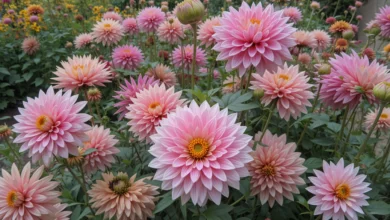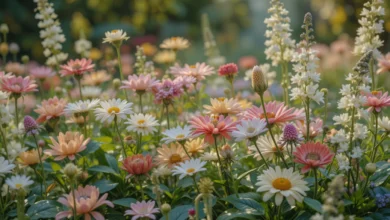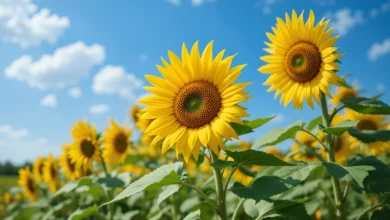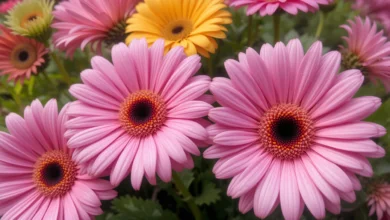How to Grow Celosia for Beautiful, Vibrant Blooms
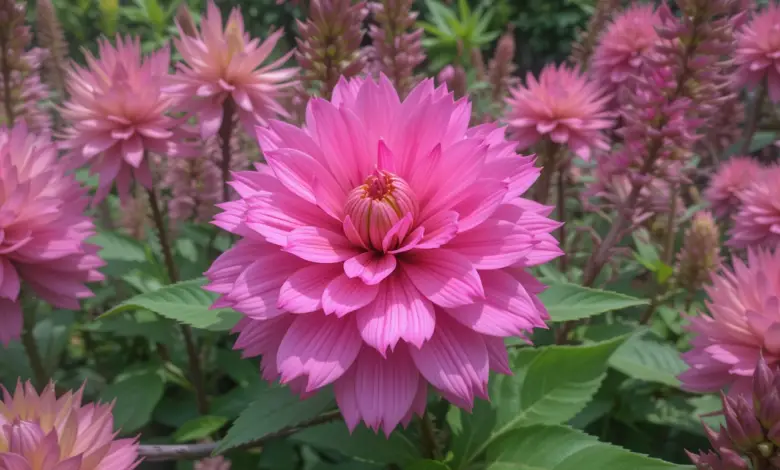
Celosia, also known as cockscomb or brain flower, is a popular plant known for its bright, vibrant flowers that add a splash of color to any garden. Whether you’re planting them in your flower beds, containers, or even as border plants, celosia flowers are sure to stand out. The plant comes in a range of colors like red, orange, pink, and yellow, and its unique shape, resembling flames or a rooster’s comb, makes it a favorite among gardeners.
If you want to learn how to grow and care for celosia, you’ve come to the right place! In this guide, we’ll walk you through the steps of planting, caring for, and enjoying these beautiful flowers.
Why Grow Celosia?
Celosia is a fantastic plant for both beginners and experienced gardeners. Here’s why you should consider growing it:
- Vibrant Colors: Celosia comes in beautiful, bright colors like red, yellow, pink, and purple.
- Easy to Grow: With the right care, celosia is relatively low-maintenance, making it perfect for new gardeners.
- Attracts Pollinators: These flowers attract bees, butterflies, and other pollinators, helping to support your local ecosystem.
- Long-Lasting Blooms: Celosia blooms continuously throughout the summer and into fall, providing months of color.
Read More: How to Grow and Care for Gerbera Daisies in Your Garden
When to Plant Celosia
Celosia is a warm-weather plant, so it’s important to plant it at the right time. The best time to plant celosia is after the last frost in your area. Celosia thrives in temperatures between 70°F and 85°F (21°C to 29°C), so it should be planted once the soil has warmed up and the weather is consistently warm.
- Best Planting Time: Plant celosia in late spring to early summer, once the danger of frost has passed and the soil has warmed up.
If you’re growing celosia from seeds, start indoors about 6 to 8 weeks before the last frost and transplant it outside once the weather warms up.
Where to Plant Celosia
Choosing the right location for your celosia is essential for healthy growth. Celosia loves full sun and needs soil that drains well. Let’s break down the ideal growing conditions:
1. Sunlight Requirements
Celosia needs at least 6 hours of direct sunlight each day to grow well. It thrives in bright, sunny spots and needs plenty of sun to produce vibrant flowers. Without enough sunlight, celosia can become leggy and weak, producing fewer flowers.
- Tip: Choose a sunny spot in your garden, away from trees or other plants that might cast too much shade.
2. Soil Conditions
Celosia prefers well-drained, fertile soil. It doesn’t like to sit in waterlogged soil, so good drainage is essential. The soil should be slightly acidic to neutral (pH between 6.0 and 7.0) for optimal growth.
- Tip: If your soil tends to retain water, mix in organic matter like compost or peat moss to improve drainage. If planting in containers, choose a well-draining potting mix.
3. Space Between Plants
Celosia plants can grow up to 12 to 18 inches tall, and they need space to spread out. To allow for proper growth and airflow, space your plants about 6 to 12 inches apart depending on the variety.
- Tip: Leave enough space around each plant to ensure air can circulate, preventing the growth of mold or mildew.
How to Plant Celosia
Now that you know when and where to plant celosia, let’s look at the steps for planting it.
1. Prepare the Soil
Before planting, make sure the soil is well-drained and loose. You can test this by digging a small hole and seeing if the soil holds water or drains quickly. If the soil is heavy or clay-like, mix in organic compost to improve its texture and drainage.
- Tip: Celosia prefers slightly acidic soil, so you may want to test your soil’s pH and amend it if necessary.
2. Dig the Planting Holes
Once the soil is ready, dig holes that are slightly bigger than the root ball of your celosia plants. The holes should be deep enough to accommodate the roots without crowding them. If you’re growing celosia from seeds, plant them about ¼ inch deep in the soil.
- Tip: For container-grown celosia, choose a pot with drainage holes to avoid waterlogging.
3. Plant the Celosia
Place the celosia plant in the hole, ensuring that the top of the root ball is level with the surrounding soil. Fill in the hole with soil and gently press around the base to eliminate air pockets. Water the plant thoroughly after planting.
- Tip: If you’re planting multiple celosia plants, make sure to space them according to their variety’s size.
4. Watering After Planting
Water the celosia well after planting to settle the soil around the roots. Keep the soil consistently moist but not soggy. Avoid overwatering, as this can lead to root rot.
- Tip: Water at the base of the plant rather than the leaves to prevent fungal diseases.
Caring for Celosia
Once your celosia is planted, proper care is essential for healthy growth and beautiful blooms. Here are some tips to help you take care of your plants:
1. Watering
Celosia prefers moist soil but doesn’t like standing water. Make sure the soil drains well, and water the plant regularly. During dry spells, you may need to water more often. However, always let the soil dry out slightly between waterings to avoid overwatering.
- Tip: Water deeply at the base of the plant, but avoid getting water on the flowers or leaves.
2. Fertilizing
To promote healthy growth and vibrant blooms, fertilize your celosia every 4 to 6 weeks during the growing season. Use a balanced, water-soluble fertilizer (such as 10-10-10) to provide the necessary nutrients for your plants.
- Tip: Avoid over-fertilizing, as this can lead to excessive leaf growth at the expense of flowers.
3. Pruning and Deadheading
Prune your celosia to remove any dead or damaged flowers and stems. Deadheading (removing spent blooms) will encourage the plant to produce more flowers and prevent it from becoming leggy.
- Tip: Cut back any damaged or overgrown stems at the base of the plant to keep it looking tidy and promote new growth.
4. Pest and Disease Control
Celosia is generally pest-resistant, but it can attract pests like aphids or spider mites. If you notice these pests on your plants, treat them with insecticidal soap or wash them off with a strong stream of water.
Celosia can also be susceptible to powdery mildew, especially in humid conditions. To prevent this, make sure the plant has good air circulation.
- Tip: Avoid getting water on the leaves when watering, as moisture on the leaves can encourage fungal diseases.
5. Mulching
Adding mulch around your celosia plants helps retain moisture, regulate soil temperature, and suppress weeds. Use organic mulch, such as wood chips or straw, to help keep the soil moist and cool.
- Tip: Apply mulch around the base of the plant but avoid piling it up against the stems to prevent rot.
Troubleshooting Common Celosia Problems
Even with the best care, you might encounter some issues with your celosia plants. Here are some common problems and how to fix them:
1. Yellowing Leaves
If your celosia’s leaves are turning yellow, it could be a sign of overwatering, a nutrient deficiency, or pest infestations.
- Solution: Check the soil moisture and adjust your watering schedule. If the soil is too dry, water more frequently. If it’s too wet, allow the soil to dry out before watering again.
2. Lack of Flowers
If your celosia isn’t blooming, it could be due to insufficient sunlight or over-fertilizing.
- Solution: Ensure your plant is getting enough sunlight (at least 6 hours a day). Reduce the amount of fertilizer to encourage more flowers instead of excessive foliage growth.
3. Wilting Flowers
Wilting flowers can be a sign of heat stress or pests.
- Solution: Check the plant for pests like aphids. Water the plant deeply to ensure it’s not suffering from drought stress. Keep it out of hot, direct sun if possible.
Conclusion
Celosia is an easy-to-grow, vibrant flowering plant that adds color and texture to any garden. By following these tips for planting, watering, and caring for celosia, you can ensure your plants grow healthy and bloom beautifully. Whether you grow celosia in garden beds, containers, or hanging baskets, this stunning flower is sure to make a statement.

